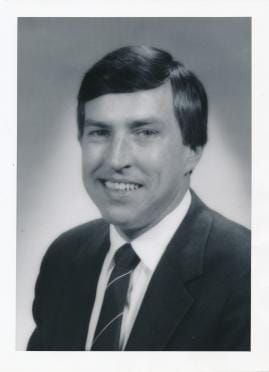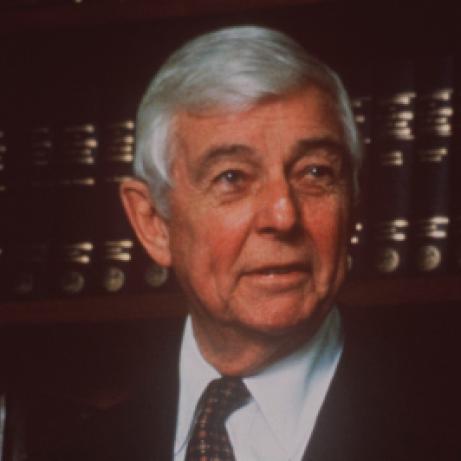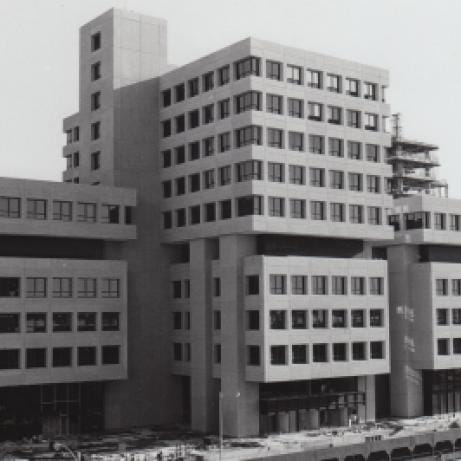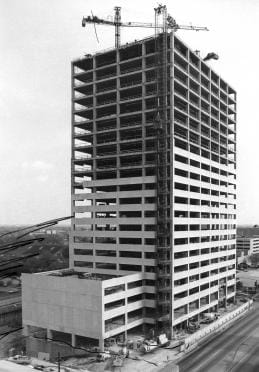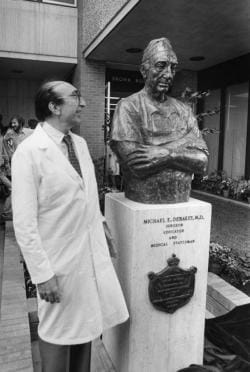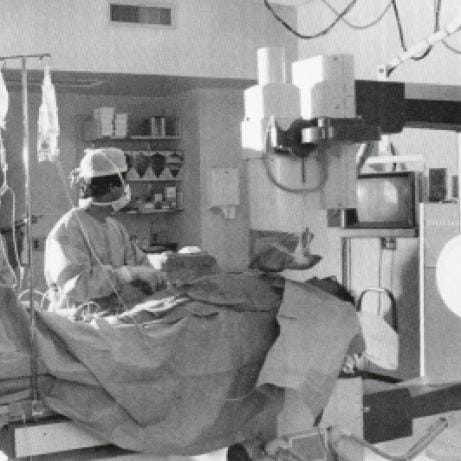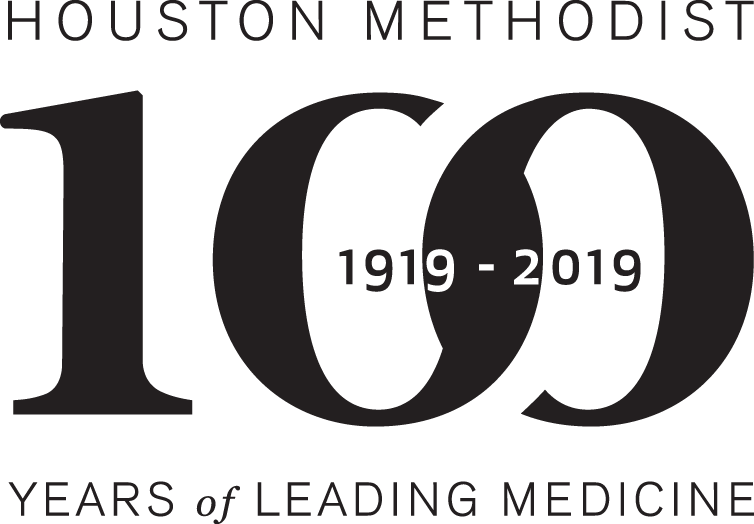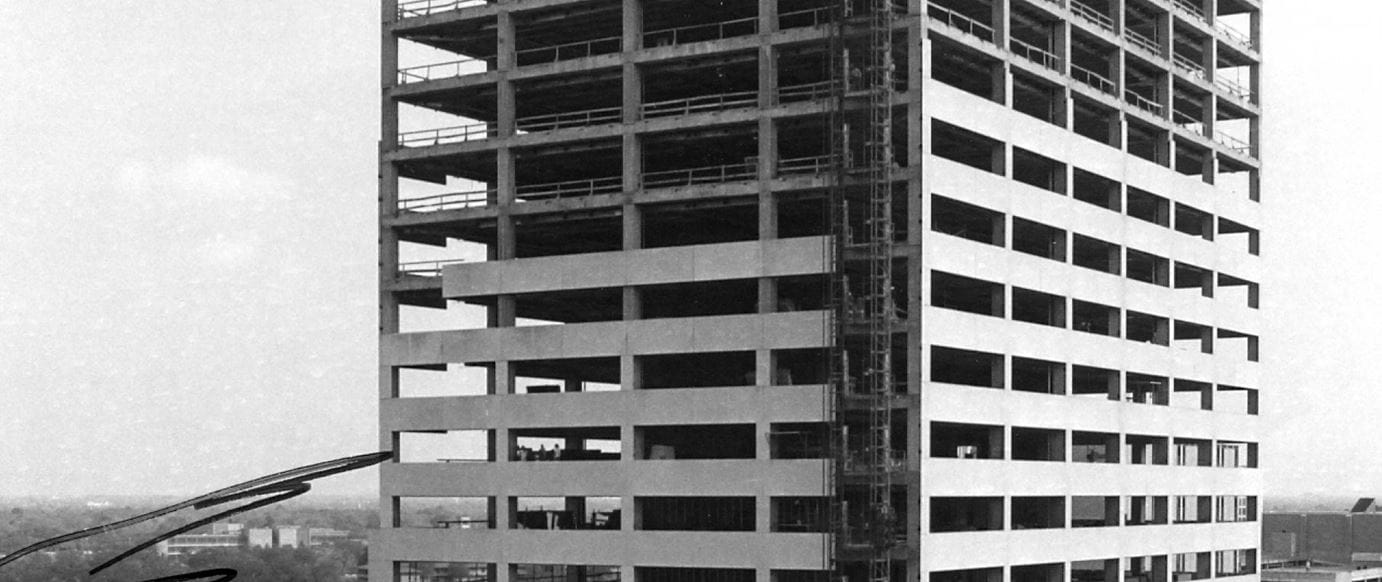1970: Stopping Heart Transplants
Dr. DeBakey stops heart transplants after performing his 12th case (a predetermined number) because anti-rejection medication is not fully developed. The development of cyclosporine came a decade later and the transplant program resumed in 1984.
1971: Larry Mathis Joins The Methodist Hospital
Mathis arrives at The Methodist Hospital after completing his master’s degree in Hospital Administration at Washington University in St. Louis. Mathis was born in 1943 in Lincoln, Nebraska and earned his BA from Pittsburgh State University, Kansas before joining the Army, where he rose to captain and served in Germany and South Vietnam. Throughout the 70s he proves himself as an exceptional managerial strategist. He will become the fifth chief executive officer in the history of Methodist.
1976: Protecting Against Floods
Record-setting rain falls on the afternoon of April 19, causing nearly $2 million worth of damage to the unfinished Neurosensory Center. Additionally, water smashes through a wall in the Fondren-Brown Building and debris floods the Main building. When the rain finally stops, several departments are destroyed. A seven-day, around-the-clock recovery effort revives The Methodist Hospital and the hospital invests $800,000 in anti-flood barriers. Prior to this event, no hospital in the Texas Medical Center had ever flooded.
1977: A New Chairman
Son of beloved Methodist Bishop A. Frank Smith, A. Frank Smith Jr. is named Chairman of The Methodist Hospital Board of Directors.
1977: The Neurosensory Center of Houston
The center is the first in the world dedicated to understanding and treating disorders that influence the eyes, ears, nose, throat, brain and nervous system. It was originally designed to house The Institute of Neurology, chaired by Dr. Stanley Appel, The Institute of Otolaryngology and Communicative Disorders, chaired by Dr. Bobby Alford, and the optical center that would become known as the Jack Blanton Eye Center. This center would make great advances in treating diseases such as blindness, deafness, dizziness, speech and swallowing disturbances, cancer and other tumors of the head and neck, and neurological disorders.
1977: The Scurlock Tower
Ground is broken for the new 21-story Scurlock Tower. The building is named in recognition of Mr. and Mrs. Eddy Scurlock for their many contributions to the hospital including the negotiation and purchase of the land on which the tower sits. When it opens to the public in 1980, it has the largest ambulatory surgery units in the country, extensive outpatient diagnostic programs, exercise equipment, gourmet restaurant Chez Eddy, and the highly specialized Sid Richardson Institute for Preventive Medicine. It is linked to the main hospital by an elevated walkway and is the city’s first high-rise condominium medical office tower. Its 21 floors symbolize the advancements preventive medicine will make in the 21st century, Ted Bowen says at its dedication.
1978: A bust commissioned by King Leopold and Princess Lilian of Belgium
The 4-foot, 300-pound bust is unveiled during the dedication ceremony of the Alkek Tower, a 4-story addition that sits atop the Brown Cardiovascular Research and Training Center. In 1958, Princess Lilian founded the Princess Lilian Foundation for Cardiovascular Patients. DeBakey participated in Lilian’s foundation and took many foundation cases free of charge for an entire year. Princess Lilian never forgot this kindness and remained forever grateful. With her invitation, he taught in Belgium and performed operations on television in major cities across the country. Today, the bust resides in the lobby of Dunn Tower.
1979: Hospital expands to 1,506 beds
Hospital expands to 1,506 beds when six floors are added to the Fondren building. A grant from the Fondren Foundation provides space for diagnostic, therapeutic and research capabilities. The Fondren expansion adds six floors, 375 beds, additional ICU beds, operating rooms and a special room for maternity patients. That year, Chinese officials visit a new echocardiography lab on Fondren 10, where they glimpse 6-inch pictures of a patient’s heart in motion. Here, cardiologist Dr. Howard S. Rubin uses state-of-the-art radiographic equipment to perform a cardiac catheterization in a new Fondren labs.
